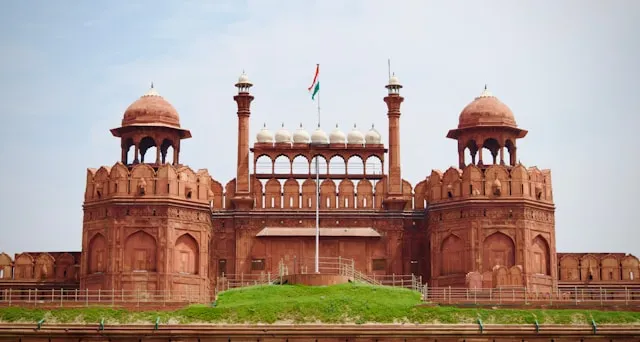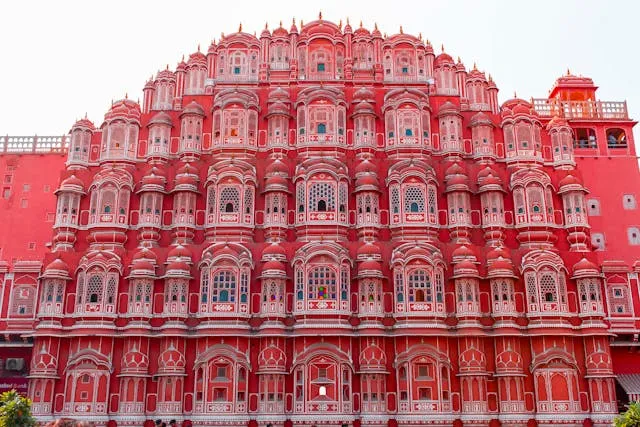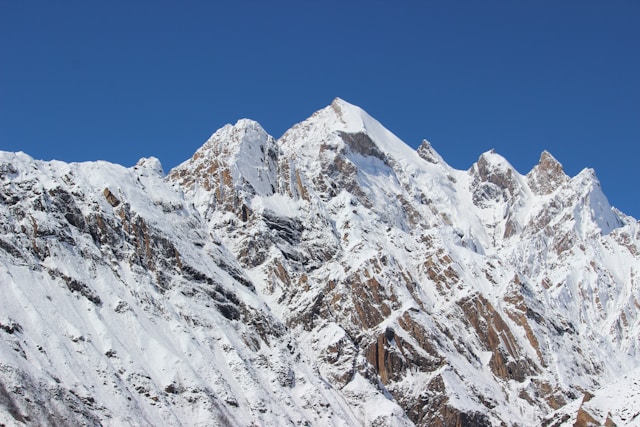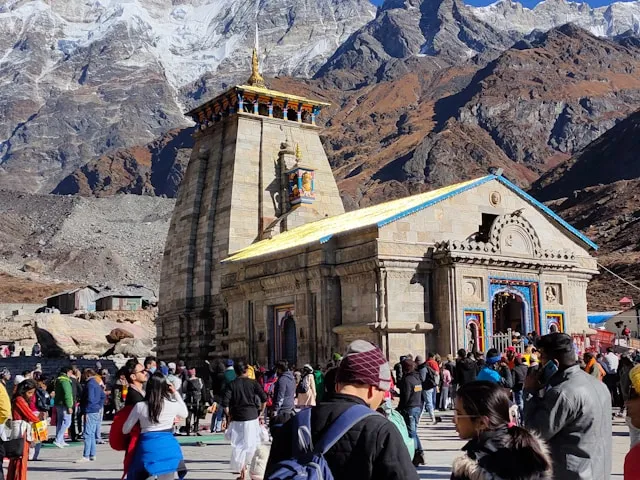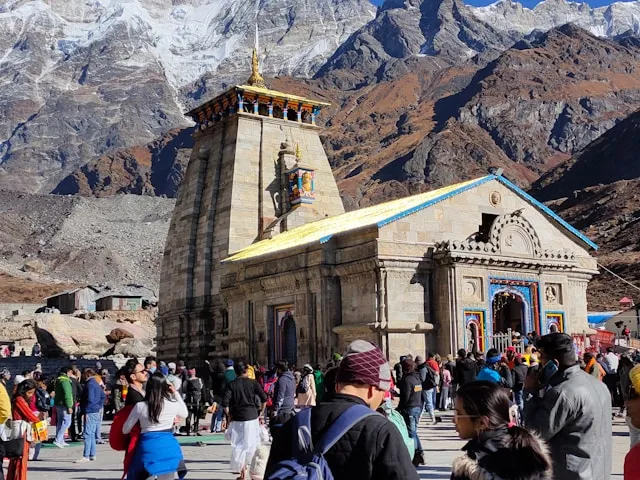Adi Kailash Travel Guide
Adi Kailash
About Adi Kailash Travel Guide
Destination Overview in Adi Kailash Yatra
Adi Kailash, also known as Chhota Kailash or Little Kailash, is a sacred peak located in the Himalayan region of Uttarakhand, India. It is revered by Hindus and Buddhists alike as a divine abode and is considered the "younger brother" of Mount Kailash. The Adi Kailash Yatra is a spiritually enriching pilgrimage journey that offers breathtaking mountain views, serene landscapes, and a chance to experience ancient religious traditions away from the usual tourist trails.
Top Attractions & Places to Visit in Adi Kailash Yatra
- Sacred Sites: Adi Kailash Peak, Jageshwar Temples, Lipu Lekh Pass
- Natural Wonders: Himalayan mountain ranges, pristine valleys, and alpine meadows
- Nearby Spiritual Spots: Om Parvat, Kalapani, Gunji
Best Time to Visit Adi Kailash Yatra
May to October is the ideal time, with clear weather and accessible trails. The pilgrimage is difficult during winter months due to heavy snowfall.
How to Reach Adi Kailash Yatra
- Road: Accessible via road till Dharchula or Gunji in Uttarakhand, then trekking to the shrine.
- Air: Nearest airport is Pantnagar Airport (around 250 km).
- Rail: Kathgodam is the nearest railway station (approx. 300 km).
Accessibility for Differently-Abled Travelers in Adi Kailash Yatra
The Yatra involves high-altitude trekking on rugged terrain; hence it is not suitable for differently-abled travelers. Basic facilities may be limited.
Things to Do & Experiences in Adi Kailash Yatra
Trek to the sacred Adi Kailash peak and pay homage
Explore ancient Jageshwar Temples complex with over 100 temples
Experience local Kumaoni and Tibetan culture
Witness stunning Himalayan vistas and peaceful surroundings
Accommodation Options in Adi Kailash Yatra
Basic guesthouses and campsites are available along the trekking route. Facilities are simple; pilgrims should be prepared for minimal comforts.
Local Cuisine & Dining in Adi Kailash Yatra
Simple local meals consisting of lentils, rice, vegetables, and traditional Kumaoni dishes are available at guesthouses and dhabas along the route.
Travel Tips & Safety in Adi Kailash Yatra
Acclimatize properly to prevent altitude sickness
Carry sufficient warm clothing and trekking gear
Hire local guides for safe navigation
Carry basic medicines and first aid kits
Weather Details & Packing Suggestions in Adi Kailash Yatra
Temperatures vary widely; pack warm layers, waterproof jackets, and sturdy trekking boots
Monsoon season (July-August) can bring heavy rains; plan accordingly
Currency Exchange & Banking Facilities in Adi Kailash Yatra
No major banking facilities en route; carry sufficient cash in Indian Rupees before starting the trek.
Connectivity & SIM Card Info in Adi Kailash Yatra
Limited network coverage in remote areas; rely on offline maps and emergency contacts.
Itinerary Suggestions in Adi Kailash Yatra
7-Days: Dharchula – Jageshwar – Gunji – Adi Kailash trek and return.
Nearby Destinations to Explore from Adi Kailash Yatra
Lipu Lekh Pass (gateway to Tibet)
Kailash Mansarovar Yatra (via Lipu Lekh)
Pithoragarh and Munsiyari hill stations
Shopping & Souvenirs in Adi Kailash Yatra
Handicrafts and woolen products from local Kumaoni and Tibetan communities can be bought at nearby towns.
Cultural & Historical Background of Adi Kailash Yatra
The region is steeped in ancient Hindu and Buddhist mythology and has been a pilgrimage site for centuries. The Jageshwar temple complex is one of the oldest in the Himalayas.
Best Transport Options in Adi Kailash Yatra
Private vehicles and buses up to Dharchula or Gunji; trekking is mandatory beyond these points.
Nearest Railway Station or Airport in Adi Kailash Yatra
Nearest Airport: Pantnagar Airport
Nearest Railway Station: Kathgodam Railway Station
FAQs About Adi Kailash Yatra
Is the Adi Kailash Yatra suitable for beginners?
The trek is moderate but requires good physical fitness and acclimatization.
What is the best time to visit Adi Kailash?
May to October is recommended for favorable weather.
Are permits required for the Yatra?
Yes, permits may be required; check with local authorities.
Which languages are spoken in the region?
Kumaoni, Hindi, and some Tibetan dialects.
Is the food safe during the trek?
Basic but safe; carry personal snacks and water purification methods.
How can I get around during the Yatra?
Trekking and walking are the primary modes beyond roadheads.
Are there medical facilities available?
Basic first aid is available; carry personal medical supplies.
Can I use my mobile phone throughout the trek?
Network is limited; plan accordingly.
Sustainability & Responsible Tourism in Adi Kailash Yatra
Pilgrims are encouraged to respect the fragile Himalayan environment, avoid littering, and support local communities by buying local products. Use eco-friendly gear and minimize plastic use during the trek.
Need a Adi Kailash Travel Guide Customized Itinerary?
Let us create your perfect Adi Kailash Travel Guide journey

Gallery

Weather
Location Map
Adi Kailash
Latest Blog Posts
Latest News: Adi Kailash Yatra | Adi Kailash Travel Guide | Sacred Yatra, Trek Route, Itinerary & Tips
What Our Travelers Say
Real experiences from our valued customers
"Going to Kedarnath was on my bucket list. Thanks for making it a smooth and unforgettable spiritual journey"
Ravi Sharma (Udaipur, India:)
"The visit to Varanasi was like no other. The entire trip was so peaceful, organized, and spiritually enriching."
Paul Johnson (Melbourne, Australia)
"Visited the Ajmer Sharif Dargah. It was a wonderful, well-coordinated trip. Everything went according to plan."
Sophie Davis (Toronto, Canada)
"A great trip to the Vaishno Devi temple. The arrangements were comfortable, and the spiritual energy was absolutely rejuvenating."
Meena Gupta (Hyderabad, India)
"The Kailash Yatra is something I’ll never forget. The holy mountain radiated peace, and the journey was spiritually fulfilling. The entire process was seamless and well-handled by the team."
Neelam Agarwal (Mumbai, India)
"Kedarnath was simply breathtaking. A beautiful, well-organized journey. It exceeded all my expectations."

